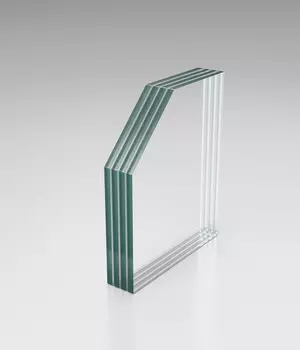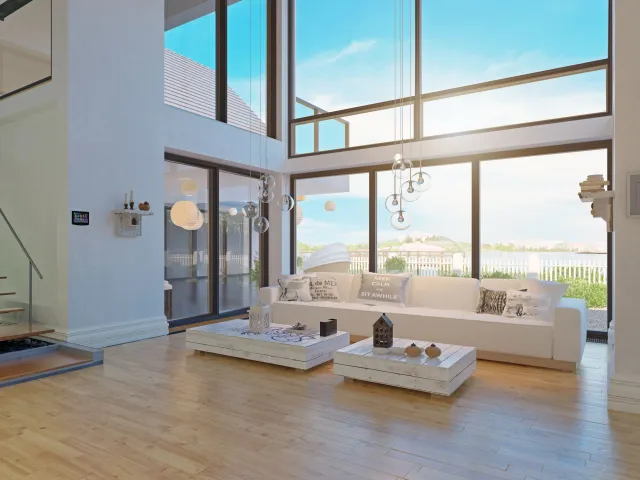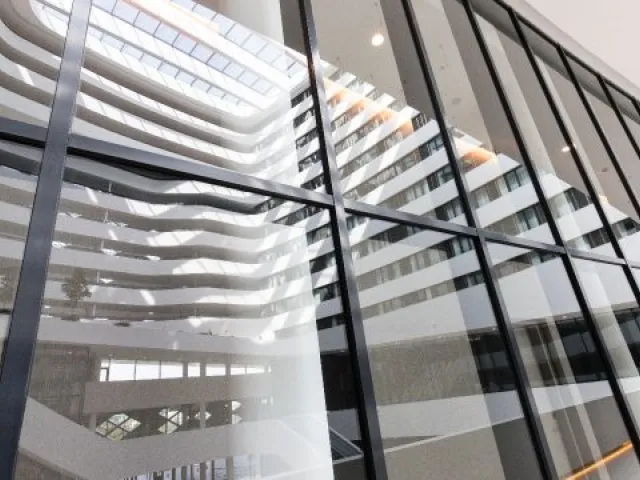Attack Resistant Classes
Protection against manual attack, as tested to the glass standard EN 356 to achieve Classes P6B to P8B and the system standard EN 1630 for Classes RC1 to RC6.
Attack Resistant Classes
The European standard EN 356 defines the resistance levels of attack-resistant glass against manual attacks, such as burglary, vandalism, or forced entry. It classifies glass security solutions based on their ability to withstand impacts, ranging from P1A to P8B. P1A offers the lowest level of resistance, while P8B provides the highest protection. These classifications depend on the number of impacts and the energy level during an attack.
Glass rated P6B to P8B offers superior durable glass protection, making it highly effective against forced entry attempts, even when heavy tools like hammers, chisels, or axes are used. These high-resistance solutions provide enhanced security by withstanding multiple impacts and prolonged attacks.
Additionally, European standards EN 1627, EN 1628, EN 1629, and EN 1630 establish safety glass standards for windows, doors, and curtain walling systems. These regulations consider not only the tools used during an attack but also the duration of resistance required. The resistance classes range from RC1, offering the lowest level of security, to RC6, providing the highest level of protection.
To achieve a specific resistance class, a complete system must be tested, including the attack-resistant glass and its framing or door system, to ensure compliance with these stringent security standards.
Attack Resistance Class Solutions
VETROGARD Attack
Multi-laminated attack-resistant glass solution resisting manual attacks, forced intrusion and escape attempts.
What types of threats can Vetrotech high-security glass protect against?
Vetrotech’s attack-resistant glass protects against burglary, vandalism, forced entry, and other security threats. It can also be customized to resist ballistic impacts as per project requirement.
Is Vetrotech India's high-security glass suitable for both commercial and residential buildings?
Yes, Vetrotech’s glass security solutions are designed for both commercial and residential applications, ensuring durable protection for banks, offices, retail spaces, luxury homes, and high-risk zones.
Can Vetrotech high-security glass be used in doors and windows?
Absolutely. Vetrotech’s attack-resistant glass is suitable for doors, windows, partitions, and facades, providing versatile, durable glass protection.
How does attack-resistant glass differ from regular glass?
Unlike standard glass, attack-resistant glass are specially designed and tested as per attack-resistant standards to resist high-impact attacks.
What are the different classes of attack-resistant glass?
EN 356 classifies attack-resistant glass from P1A to P8B, with P1A offering minimal impact resistance and P8B providing the highest security level against forced entry attempts.
How is EN 356 standard related to attack-resistant glass?
EN 356 is a safety glass standard that defines the testing and classification of resistance against manual attack.
How is attack-resistant glass tested for resistance to manual attack?
Glass is tested under EN 356 for P1A to P5A classification by the ball drop test. Higher classifications of P6B to P8B, must withstand sustained force from axe and hammer.
How does attack-resistant glass perform in terms of thermal insulation and solar control?
Vetrotech’s glass security solutions can be customized to offer low-emissivity and solar control coatings, enhancing energy efficiency.
How is attack-resistant glass installed?
Attack resistant glass should be installed only with a tested and certified system that aligns with safety glass standards to ensure promised security performance.
What are the recommended framing systems for attack-resistant glass?
Vetrotech recommends high-security framing systems like the VDS range of solutions, that are specifically tested to match the resistance class of the attack-resistant glass. Under the VDS range, we offer doors, partition and curtain wall solutions for attack-, bullet- and blast- resistance.
Can attack-resistant glass be cut or drilled on-site?
No, attack-resistant glass is manufactured to precise specifications. Cutting or drilling attack resistant glass will compromise its integrity and the glass no longer be compliant with safety glass standards or the rated classification.
Related Articles
Discover expert blogs on fire safety and high-security glazed solutions with Vetrotech. Learn how to create safer and more secure environments.
Enhancing Safety with High-Security Glass Windows for Homes and Public Spaces
Strengthen safety with high-security glass windows that resist impact and intrusion, ideal for homes and modern public spaces.
BIS Guidelines for Security Glass: Ensuring Compliance and Safety in India
Explore BIS guidelines for security glass in India. Learn about compliance requirements and safety standards to ensure high-security glazing solutions.
How High-Security Glasses Enhance Home Safety and Security
Ensure home safety with high-security sliding glass doors. Discover durable, advanced glass solutions for enhanced protection and style.
Related Classification
Blast Resistant Classes
Protect against blasts, as tested to the glass standard EN 13541 for resistance classes ER1 through ER4 (S/NS) and system standard EN 13123-1 and 13123-2.
Bullet Resistant Classes
Protection against bullets as tested to glass standard EN 1063 for Classes BR1 to BR7 (S/NS) + SG1/SG2 (S/NS) specific to shotguns and the system standard EN 1522 and EN 1523 for Classes FB1 to FB7 (S/NS).
Request a quote
To best support you on your quote request, we’ll need some basic information. Simply fill out the form and we’ll get back to you.

Contact Us
Whether you are looking for specific information about our solutions or advice for a project, we would be delighted to talk to you.



